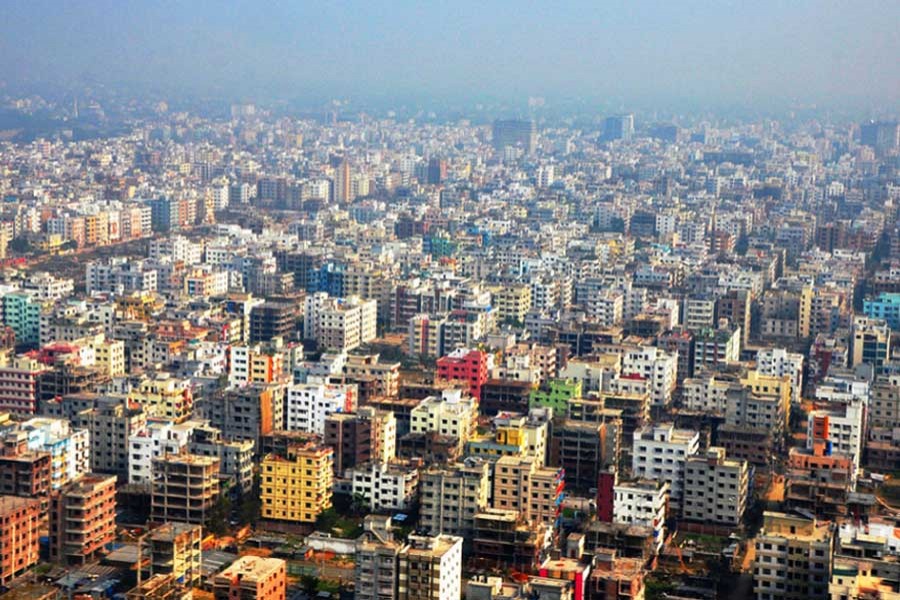The challenge for future development of Dhaka city will be risk communication, a JICA official told a workshop on Thursday.
Risk communication refers to the exchange of information between the government and the community on potential risks or dangers which exist in the city. This is why a hazard map is required.
"Formulation of the hazard map will be a kind of challenge due to the varieties of information. This map includes location or information on dangerous places and people can easily understand what risks are there and prepare themselves," said Yasuhiro Kawazoe, senior representative of Japan International Cooperation Agency (JICA), Bangladesh office.
In Japan, he said, the government has made a hazard map containing comprehensive information on potential disasters adding that the map is distributed at household level.
"What kind of info should be shared properly and organised on a map so that people can learn about the risks that will be a challenge for the future development of Dhaka. The government should provide such information and help people change their attitude," he said.
The government needs to provide this kind of information which does not exist now, he added.
Mr Kawazoe was speaking at a sharing workshop on the projects of 'Towards Resilient Dhaka City' at a city hotel.
Dhaka North City Corporation (DNCC), SEEDS Asia and the World Bank jointly organised the programme to share experiences and learning from two important projects.
The projects were "Urban Resilience Project (URP)-DNCC Part" supported by the World Bank and "Capacity building for Community Based Disaster Risk Reduction in Urban Area of Bangladesh" implemented by DNCC and SEEDS Asia supported by JICA.
During the workshop, DNCC mayor Atiqul Islam unveiled a booklet titled "Nagar Pratyasha," a compilation of extensive research-based DRR (Disaster Risk Reduction) knowledge by experts and community members in north Dhaka city.
The booklet promotes the message "when disaster poses a threat, there are many solutions that are already been taken towards better resilience".
Mayor Atiq emphasised the importance of conducting more community awareness programmes as well as providing training to city dwellers on disaster preparedness so that all inhabitants of the capital can help make the capital a resilient city.
"Disaster is very much unknown and unpredictable. But we want to share the message that we are ensuring safety, wellbeing and dignity of our citizens," he said.
He proposed a new tagline for the capital styled "Love Dhaka" for creating mass awareness to make the country's largest city a resilient one.
"We don't need to take example from other cities. Let us make Dhaka an example to others," he said.
DNCC Chief Executive Officer Abdul Hai, Chief Engineer Brig Gen Md Jubayer Salehin, JICA country programme coordinator Naoki Matsumura, and Executive Director of SEEDS Asia Yuko Nakagawa also spoke at the workshop on the community preparedness.
Project director of URP-DNCC Dr Tariq bin Yousuf, SEEDS Asia media consultant Suvendrini Kakuchi and project coordinator Miharu Sato gave separate presentations.
Mr Tariq underlined the need for making a DRR dedicated fund, integrated platform of communities and effective cooperation between cross agencies.
Yuko emphasised that disaster in Japan has shown that community preparedness is the most important in saving lives.
City councillors of different wards of DNCC and other city corporation representatives took part in the open discussion and gave their opinions about the role of communities in taking preparedness towards disasters like fire, earthquake and waterlogging.
msshova@gmail.com


